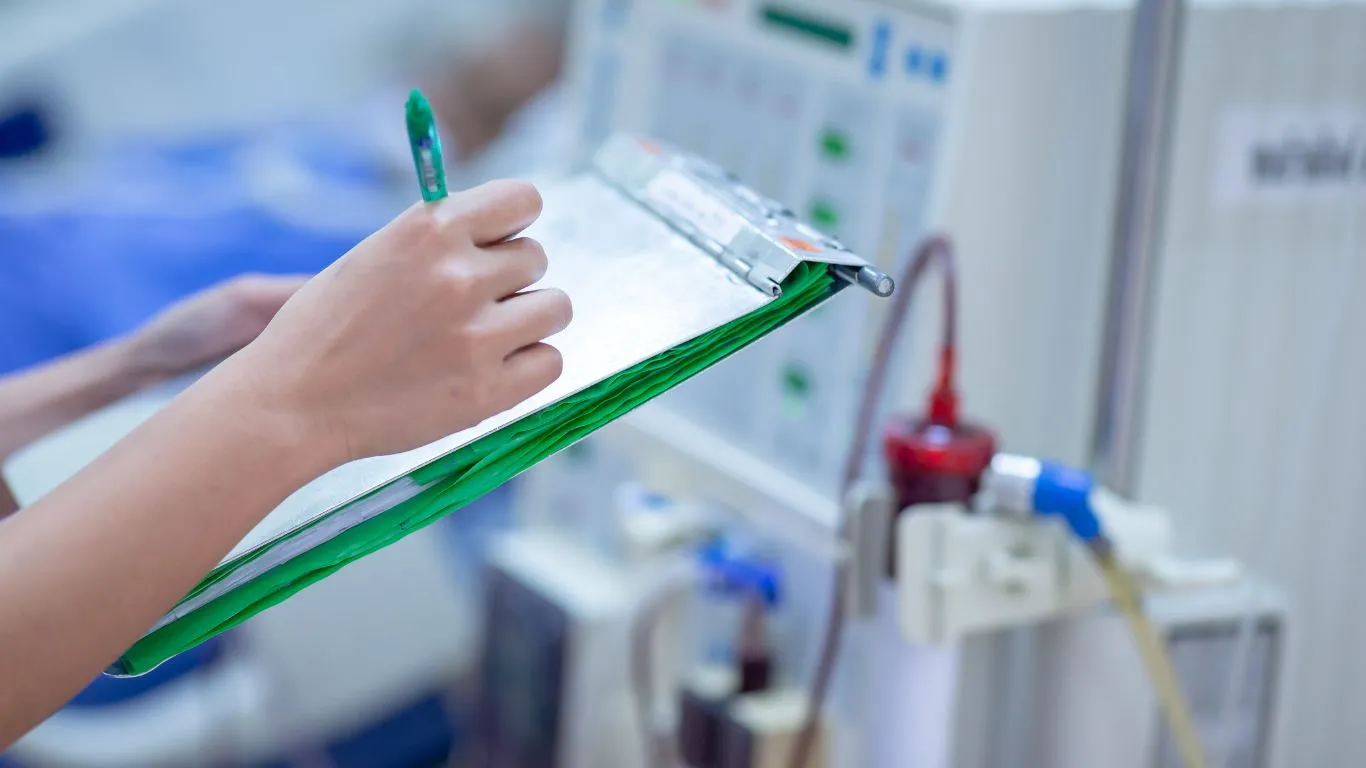
25 Aug Causes of Blood Clotting in Arteriovenous Fistula
Doctors use the arteriovenous fistula (AV fistula) to connect a kidney dialysis machine to a patient’s bloodstream.
Despite its numerous benefits, like any other medical technique, it is susceptible to certain issues, one of which is blood clotting. In the following article, Dr. Amir Malkawi, a vascular surgery consultant, will explain the reasons behind blood clotting in the arteriovenous fistula.
Causes of Blood Clotting in Arteriovenous Fistula
Most causes of blood clotting in the arteriovenous fistula include the following:
- Narrowing of the vein due to thickening of its inner layer, often associated with changes in blood flow rate or pressure variations in the area.
- Multiple skin punctures around the fistula site, leading to the formation of scar tissue that increases the risk of blood clots.
Risk Factors Increasing the Likelihood of Blood Clotting in Arteriovenous Fistula:
- High blood pressure.
- Diabetes mellitus.
- Hypercoagulability due to a health condition.
- Elevated levels of blood hemoglobin.
How is Blood Clotting in Arteriovenous Fistula Diagnosed?
There are several methods to diagnose blood clotting in the arteriovenous fistula, including:
- Listening to blood flow sounds using a stethoscope, where abnormal sounds may indicate the presence of a blood clot in the area.
- Imaging of blood vessels using contrast dye.
- Ultrasound imaging of blood vessels at the fistula site to determine blood flow rate, locate the blood clot, and assess its size.
- Magnetic Resonance Imaging (MRI), used in special cases when the blood clot moves to other parts of the body.
Read More: Peripheral Vascular Catheterization
Treatment of Blood Clotting in Arteriovenous Fistula
There are three main methods for treating blood clotting in the arteriovenous fistula, which are explained as follows:
- Administration of medications, including tissue plasminogen activator (tPA), to help dissolve the blood clot. This procedure may be performed at a kidney dialysis center or the patient may be transferred to a hospital depending on the severity of the condition.
- Thrombectomy, which involves using a specialized catheter guided by direct imaging to access and remove the blood clot. Local anesthesia and sedation may be administered without the need for general anesthesia.
- Thrombolysis using a catheter involves inserting a specialized catheter into the site of a blood clot within the arteriovenous fistula. The catheter then delivers a thrombolytic agent directly to the clot, efficiently dissolving it.
Frequently Asked Questions
Is blood clotting in the arteriovenous fistula dangerous?
Yes, it can pose a risk to the affected person. Therefore, it is important not to delay receiving appropriate treatment.
If blood clotting occurs, doctors may need to change the location of the arteriovenous fistula.
In cases that are not severe, simply removing the blood clot and restoring normal blood flow may be sufficient, without needing to change the location of the arteriovenous fistula. However, in other cases, it may be necessary to place the arteriovenous fistula in the other arm.
What are other risks associated with the arteriovenous fistula?
Apart from blood clotting, several other risks may develop in the arteriovenous fistula, including:
- Infection at the site of the arteriovenous fistula.
- Disruption of blood flow through the arteriovenous fistula.
- Dilatation of blood vessels at the site of the arteriovenous fistula.
- Bleeding at the site of the arteriovenous fistula.
References:
[1] – https://www.yalemedicine.org/conditions/preparing-dialysis-av-fistula
[2] – https://www.medicinenet.com/what_causes_thrombosis_in_av_fistula/article.htm
[3] – https://www.ncbi.nlm.nih.gov/pmc/articles/PMC5332078/
[4] – https://emedicine.medscape.com/article/419393-overview#a2
[5] – https://www.azuravascularcare.com/infodialysisaccess/my-access-clotted/
[6] – https://wikem.org/wiki/Clotting_of_AV_fistula
[8]-https://www.azuravascularcare.com/infodialysisaccess/what-causes-stenosis-in-an-av-fistula/
